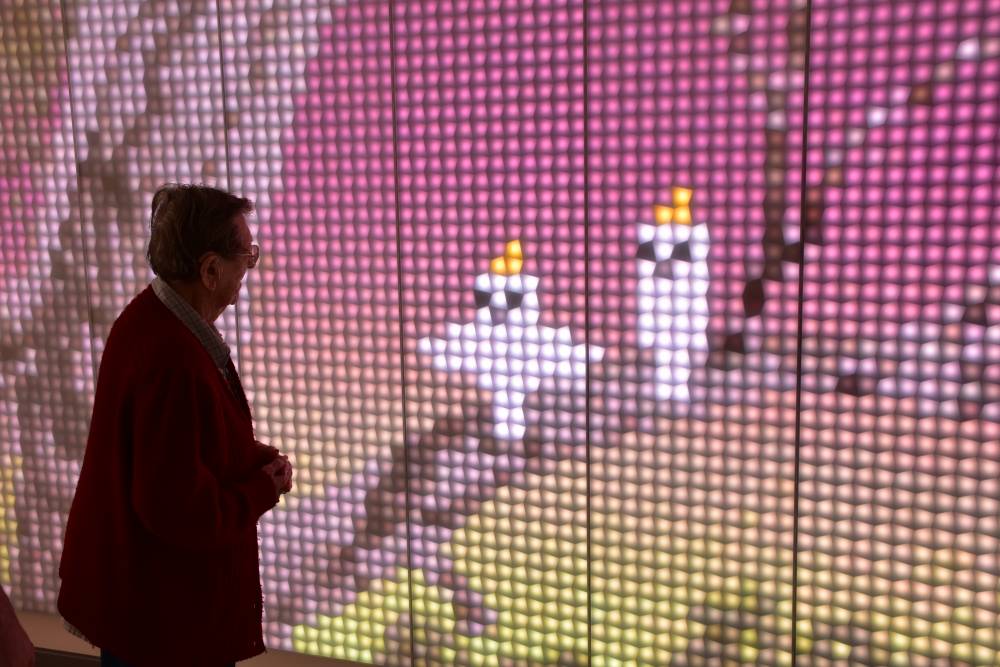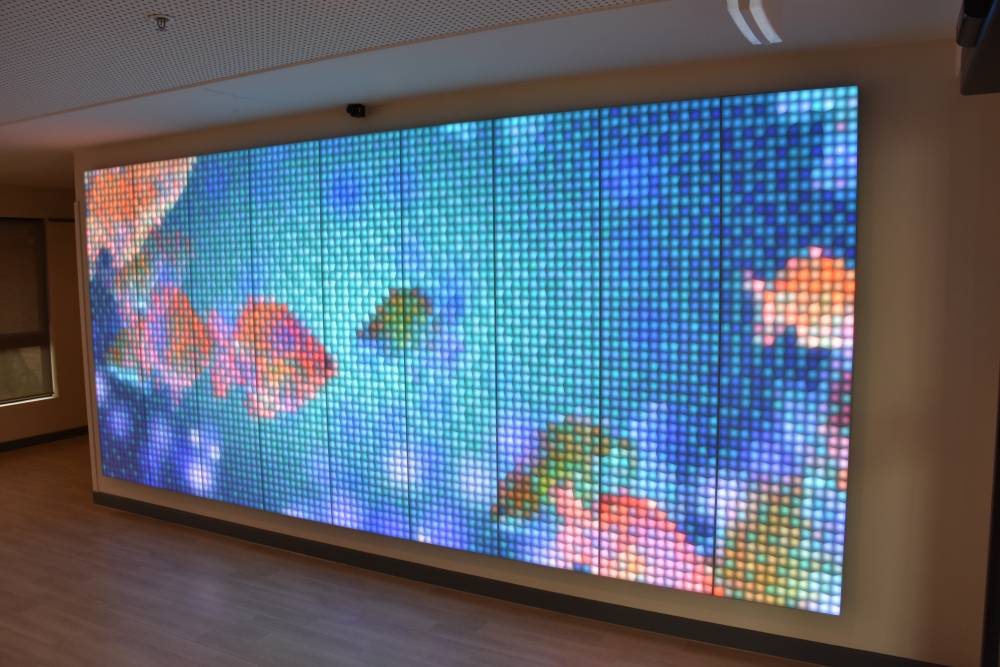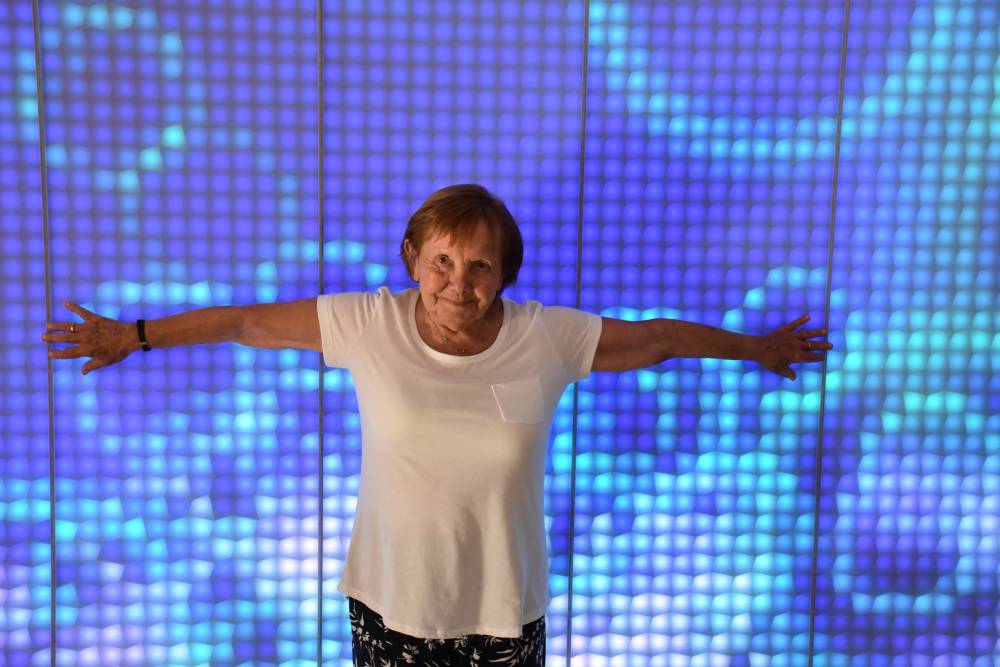
Bright colours, moving shapes and interactive screens: the Lumes digital wall brought joy to a paediatric hospital. Seeing the sheer elation such an innovation could bring, Bolton Clarke had an idea. Could this work in aged care?
Using principles of dementia design, Bolton Clarke partnered with Lumes to develop content to reach residents living with dementia, who have started to lose certain cognitive or communication abilities. It’s the first installation of a digital wall in an aged care home, worldwide.
The digital wall cycles through colourful animations, with recognisable shapes or colours. Each animation is intended to be soothing, and visible to residents with reduced eyesight. These digital scenes aren’t just pleasant to look at: they’re engaging and interactive. There are koalas to touch, ping pong to play, or snow angels to be made.
As important as it is to bring delight into care, the digital wall seeks to serve three key aims.

Getting social in non-verbal ways
Losing the ability to communicate can be a frustrating and a confusing experience. By opening new methods of communication through technology, we can reduce that frustration. This allows staff, friends, family and even other residents to interact communally in an intuitive and joyful way.
This also creates a new medium for loved ones to re-engage with their relative or friend. Avoiding stilted or repeated conversations, the wall is a topic of discussion. It brings communication alive. Rather than reminding families of loss, the digital wall facilitates a new kind of interaction.
Bringing meaning into activity
Inactivity is a risk with many dementia patients. Keeping resident’s active is key in keeping them healthy and happy. The interactive nature of the digital wall rewards action. Residents are encouraged to walk to it or move with it; it offers something more stimulating than static pictures and is more communal in nature than virtual reality.
Acting as a conduit for activity, the digital wall gives residents something to engage with. This, in turn, reinstates a feeling of utility and connectedness to the world around them.
Remembering and making new memories
For millennia, cultures have used images and stories to preserve knowledge and memories. They utilise the brain’s capacity for visual memory and spatial recollection. Such a multisensory experience empowers residents to create new memories and interactions.

That’s not to overlook the mental benefits of creativity. A novel place, with no prior memories attached, can be the perfect location for new conversations or reminiscence. Colours can spark memories of things, places or feelings. The digital wall is what residents will make of it: serving to spark some reflection and engagement.
Providing care of the future for residents today
The beauty of the digital wall lies in its connectedness: it unites a community on a personal level, whilst technologically, it is an evolving being. As research finds improved ways to engage people living with dementia, so too can the wall adapt to its user’s needs.
This is one of the key motivations behind installing the digital wall – alongside other innovations designed into Bolton Clarke Galleon Gardens. The design team want to spark a serious conversation about aged care, and taking care of the human experience. The digital wall should act as a springboard for future innovations, and strike inspiration in the most surprising places. And if residents can have some fun in the process of doing so, everyone wins.